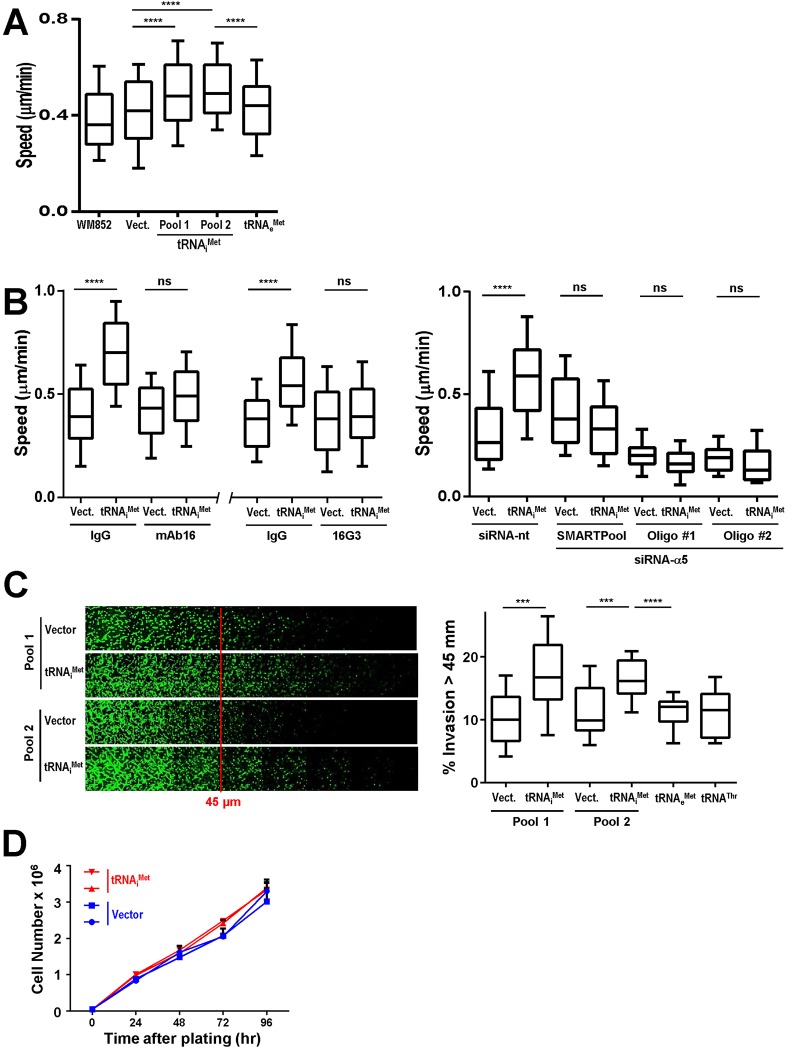Fig. 4.
Elevated levels of tRNAiMet promote migration and invasion of melanoma cells. (A) Untransfected WM852 melanoma cells (WM852) or those stably transfected with a vector encoding tRNAiMet (two independent pools), tRNAeMet, or an empty vector control (Vect.) were plated onto plastic dishes and their migration speed determined as for Fig. 1A. (B) Control (Vect.) and tRNAiMet-expressing WM852 cells (pool 2 from A) were transfected with siRNAs targeting α5 integrin (siRNA-α5; either a SMARTPool or two individual siRNA oligonucleotides as indicated) or a non-targeting control (siRNA-nt) (right panel), or were left untransfected (left and centre panels). Migration of these cells was then determined as for Fig. 1A in the presence and absence of an α5β1 integrin blocking antibody (mAb16), an antibody which blocks integrin-fibronectin association (16G3) or the appropriate isotype-matched control antibodies (IgG). (C) WM266.4 melanoma cells were stably transfected with a vector encoding tRNAiMet (two independent pools), tRNAeMet, tRNAThr or empty vector (Vect.) (two independent pools). Cells were allowed to migrate into Matrigel plugs towards a gradient of EGF and serum for 72 h, and then visualised by Calcein-AM followed by confocal microscopy. Optical sections were taken every 15 μm and consecutive images are displayed as a series running from left to right (C; left panels). Cell invasion beyond 45 μm was quantified (C; right panel). Data in A-C are represented as box and whisker plots (whiskers: 10-90 percentile); ****P<0.0001; ***P<0.001; ns, not significant; Mann–Whitney test. All data are from at least 3 independent experiments with multiple internal replicates. (D) WM266.4 cells stably transfecting with a control vector (Vect.) or tRNAiMet (two independent pools of each) were plated onto plastic dishes and their rate of proliferation over a 96 h period was determined by cell counting. Values are mean±s.e.m., n=3.

